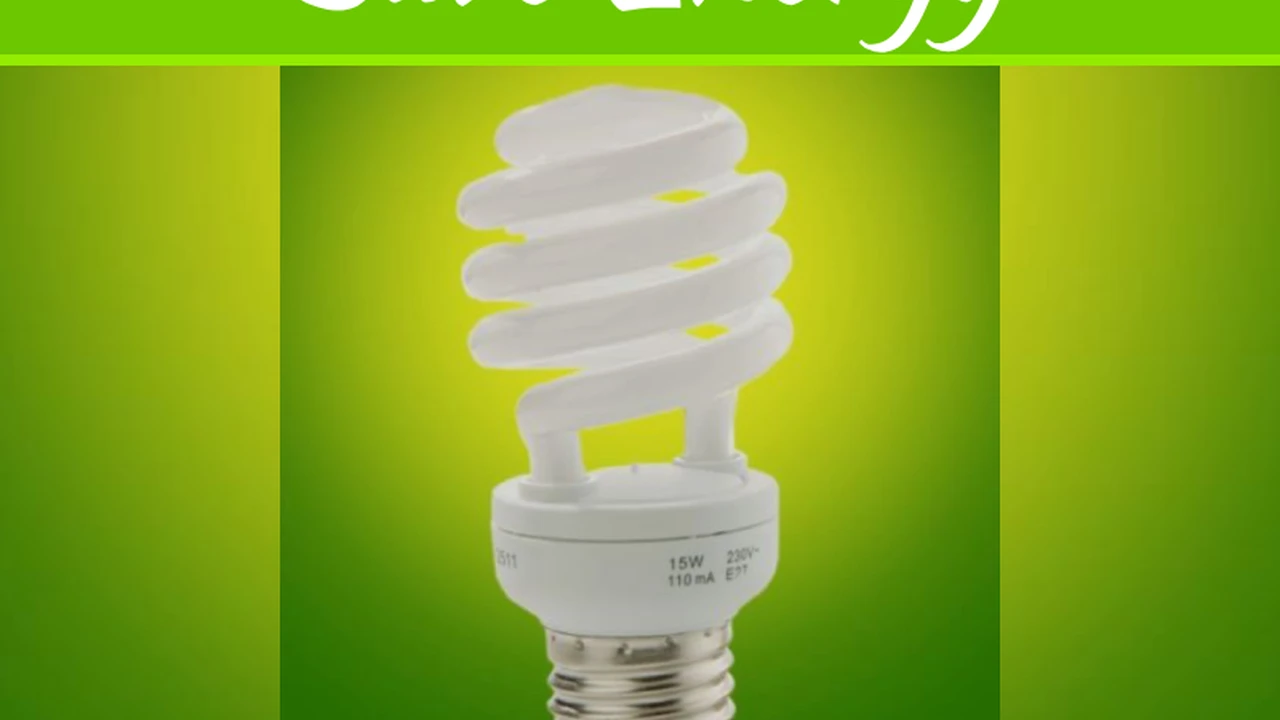4 Ways to Make Your Home More Energy Efficient
Learn 4 practical ways to make your home more energy-efficient and reduce utility costs.

Making your home more energy-efficient isn't just good for the planet; it's fantastic for your wallet too. In an era where utility costs seem to be constantly on the rise, finding practical ways to reduce your energy consumption is more important than ever. This guide will walk you through four key areas where you can make significant improvements, helping you save money and contribute to a greener future. We'll dive into everything from insulation to smart home tech, offering practical advice, product recommendations, and even some comparative insights to help you make informed decisions.
4 Ways to Make Your Home More Energy Efficient
1. Optimize Your Home's Insulation and Sealing for Energy Savings
One of the most effective ways to improve your home's energy efficiency is by ensuring it's properly insulated and sealed. Think of your home as a giant thermos; if there are cracks or thin spots, the temperature inside will quickly escape or be influenced by the outside. Proper insulation keeps heat in during winter and out during summer, significantly reducing the workload on your HVAC system.
Understanding Insulation Types and Their Benefits
There are several types of insulation, each with its own benefits and ideal applications. The most common include:
- Fiberglass Batts: Often found in rolls or pre-cut panels, fiberglass is a popular and cost-effective choice for walls, attics, and floors. It's relatively easy to install for DIY enthusiasts.
- Blown-in Cellulose or Fiberglass: This type is excellent for filling irregular spaces, existing wall cavities, and attics. It's made from recycled materials (cellulose) or fiberglass fibers, blown in with special equipment.
- Spray Foam Insulation: While more expensive, spray foam offers superior air sealing and R-value (a measure of thermal resistance). It expands to fill cavities, creating an airtight barrier. It's ideal for new constructions or major renovations.
- Rigid Foam Boards: These panels are often used for exterior wall sheathing, basement walls, or cathedral ceilings. They offer high R-values per inch.
Sealing Air Leaks: The Hidden Energy Drain
Insulation alone isn't enough if your home is leaky. Air leaks around windows, doors, electrical outlets, and plumbing penetrations can account for a significant portion of your energy loss. Identifying and sealing these leaks is crucial.
- Caulking: Use caulk to seal cracks and gaps around window frames, door frames, and other stationary joints.
- Weatherstripping: Apply weatherstripping around movable components like doors and operable windows to create a tight seal when closed.
- Foam Sealant: For larger gaps and penetrations (e.g., around pipes or wires), expanding foam sealant is highly effective.
- Outlet and Switch Gaskets: These inexpensive foam gaskets can be placed behind electrical outlets and light switches on exterior walls to prevent drafts.
Product Recommendations for Insulation and Sealing
- Owens Corning PINK NEXT GEN Fiberglass Insulation: A widely available and effective option for attics and walls.
- GREAT STUFF PRO Gaps & Cracks Insulating Foam Sealant: Excellent for sealing larger gaps and penetrations.
- Duck Brand Self-Adhesive Weatherstrip Seal: A simple and effective solution for sealing around doors and windows.
2. Upgrade to Energy Efficient Appliances and Lighting for Reduced Consumption
Your home's appliances and lighting contribute significantly to your overall energy consumption. Older models, especially refrigerators, washing machines, and dishwashers, can be energy hogs. Upgrading to energy-efficient alternatives, particularly those with an ENERGY STAR certification, can lead to substantial long-term savings.
Choosing ENERGY STAR Certified Appliances
The ENERGY STAR label indicates that a product meets strict energy efficiency guidelines set by the U.S. Environmental Protection Agency and Department of Energy. When shopping for new appliances, always look for this label. While the initial cost might be slightly higher, the energy savings over the appliance's lifespan often outweigh the difference.
Key Appliances to Consider Upgrading
- Refrigerators: Modern refrigerators are far more efficient than models from even a decade ago. Look for features like improved insulation and efficient compressors.
- Washing Machines: Front-loading washing machines generally use less water and energy than top-loaders.
- Dishwashers: ENERGY STAR dishwashers use less hot water and electricity.
- Water Heaters: Tankless water heaters or heat pump water heaters can offer significant energy savings, especially for larger households.
- HVAC Systems: If your furnace or air conditioner is old, replacing it with a high-efficiency model can be one of the biggest energy-saving investments you make.
The Power of LED Lighting
If you're still using incandescent bulbs, switching to LEDs (Light Emitting Diodes) is a no-brainer. LEDs use up to 90% less energy than traditional bulbs and last significantly longer, reducing both your electricity bill and the frequency of bulb replacements.
Product Recommendations for Energy Efficient Appliances and Lighting
- LG French Door Refrigerator with Smart Inverter Compressor (ENERGY STAR Certified): Known for its energy efficiency and smart features. Price range: $1,500 - $3,000.
- Samsung Front Load Washer with Steam (ENERGY STAR Certified): Offers excellent water and energy efficiency. Price range: $800 - $1,200.
- Rheem ProTerra Hybrid Electric Water Heater (ENERGY STAR Certified): A highly efficient heat pump water heater. Price range: $1,500 - $2,500 (installation extra).
- Philips Hue White and Color Ambiance Smart Bulbs: While a bit pricier, these smart LEDs offer excellent energy efficiency and smart home integration. Price range: $15 - $50 per bulb.
- GE LED Bright Stik Light Bulbs: A more budget-friendly option for general LED lighting. Price range: $2 - $5 per bulb.
3. Harness Smart Home Technology for Automated Energy Management
Smart home technology isn't just about convenience; it's a powerful tool for energy management. By automating and optimizing your home's systems, you can significantly reduce wasted energy without sacrificing comfort.
Smart Thermostats: Your Energy Saving Brain
A smart thermostat is arguably the most impactful smart home device for energy efficiency. These devices learn your preferences, adjust temperatures based on occupancy, and can be controlled remotely. Some even integrate with local weather forecasts to optimize heating and cooling.
Smart Lighting Systems: Light When and Where You Need It
Beyond just using LED bulbs, smart lighting systems allow you to control lights remotely, set schedules, and even use motion sensors to ensure lights are only on when a room is occupied. This prevents lights from being left on unnecessarily.
Smart Plugs and Power Strips: Eliminating Phantom Loads
Many electronics continue to draw power even when turned off (this is known as a phantom load or vampire drain). Smart plugs and power strips allow you to cut power to these devices completely when not in use, saving energy.
Product Recommendations for Smart Home Energy Management
- Google Nest Learning Thermostat: One of the most popular smart thermostats, known for its learning capabilities and sleek design. Price: $200 - $250.
- ecobee SmartThermostat with Voice Control: Offers room sensors for more accurate temperature control and integrates with voice assistants. Price: $200 - $260.
- Lutron Caseta Wireless Smart Lighting Dimmer Switch Starter Kit: A reliable and easy-to-install smart lighting system that allows for dimming and scheduling. Price: $100 - $160.
- TP-Link Kasa Smart Plug Mini: Affordable and effective smart plugs for controlling individual devices and eliminating phantom loads. Price: $10 - $15 per plug.
- Sense Energy Monitor: For the truly dedicated, this device installs in your electrical panel and provides real-time energy usage data for individual appliances, helping you identify energy hogs. Price: $300 - $350.
Comparing Smart Thermostats: Nest vs. ecobee
Both Nest and ecobee are top contenders in the smart thermostat market. Nest is often praised for its intuitive learning algorithm, which automatically creates a schedule based on your habits. Ecobee, on the other hand, excels with its remote sensors, allowing it to monitor temperatures in multiple rooms and average them out, ensuring more consistent comfort throughout your home. Nest tends to have a more minimalist design, while ecobee offers more advanced settings and integrations. Your choice often comes down to whether you prefer a system that learns your habits or one that gives you more granular control over individual room temperatures.
4. Optimize Your Windows and Doors for Thermal Performance and Comfort
Windows and doors are often significant sources of heat loss in winter and heat gain in summer. Upgrading to energy-efficient windows and doors, or at least optimizing your existing ones, can make a substantial difference in your home's energy performance and comfort.
Understanding Energy-Efficient Windows
When considering new windows, look for features like:
- Double or Triple Panes: Multiple panes of glass with air or inert gas (like argon or krypton) in between provide better insulation than single-pane windows.
- Low-E Coatings: Low-emissivity (Low-E) coatings are microscopic, transparent metallic layers applied to the glass surface. They reflect radiant heat, keeping heat inside during winter and outside during summer.
- Insulated Frames: Frames made from materials like vinyl, fiberglass, or wood with internal insulation offer better thermal performance than aluminum frames.
- Good Seals: Ensure the windows have tight seals to prevent air leakage.
Optimizing Existing Windows and Doors
If replacing windows and doors isn't in your budget right now, there are still ways to improve their energy efficiency:
- Window Films: Apply energy-saving window films that can block UV rays and reduce heat transfer.
- Heavy Curtains or Blinds: During extreme temperatures, closing heavy curtains or blinds can provide an extra layer of insulation.
- Draft Stoppers: Place draft stoppers at the bottom of doors to prevent air from seeping in.
- Re-caulking and Weatherstripping: As mentioned earlier, regularly inspect and re-apply caulk and weatherstripping around your windows and doors.
Product Recommendations for Window and Door Optimization
- Andersen 400 Series Windows (with Low-E Glass): A popular choice for new or replacement windows, known for their quality and energy efficiency. Price varies widely based on size and style, typically $400 - $1,000+ per window.
- Pella Impervia Fiberglass Windows: Fiberglass offers excellent durability and thermal performance. Price similar to Andersen.
- 3M Thinsulate Climate Control Window Film: An effective DIY solution for improving the insulation of existing windows. Price: $50 - $100 per roll (covers multiple windows).
- NICETOWN Thermal Insulated Blackout Curtains: These curtains can significantly reduce heat transfer through windows. Price: $20 - $50 per panel.
- Suptikes Door Draft Stopper: A simple and effective solution for sealing the bottom of doors. Price: $10 - $20.
Comparing Window Materials: Vinyl vs. Fiberglass
When choosing new windows, vinyl and fiberglass are two popular energy-efficient options. Vinyl windows are generally more affordable and require very little maintenance. They offer good insulation properties and come in a wide range of styles. However, they can sometimes warp or degrade over time in extreme temperatures. Fiberglass windows, while typically more expensive, are incredibly durable and stable, resisting warping, cracking, and expanding/contracting with temperature changes. They also offer superior insulation and can be painted, providing more design flexibility. For long-term performance and extreme climates, fiberglass often has an edge, but vinyl remains a strong contender for budget-conscious homeowners.
By implementing these four strategies, you're not just cutting down on your utility bills; you're also making your home more comfortable, increasing its value, and contributing to a more sustainable future. Start small, tackle one area at a time, and you'll be amazed at the difference you can make.
:max_bytes(150000):strip_icc()/277019-baked-pork-chops-with-cream-of-mushroom-soup-DDMFS-beauty-4x3-BG-7505-5762b731cf30447d9cbbbbbf387beafa.jpg)





